There are a variety of wood screws available on the market, each with their own unique purpose. In order to select the right screw for the job, you need to be familiar with the different types available. This article will introduce you to some of the most common screws and their uses. Keep in mind that there are many variations of these screws, so always consult a professional before starting any project.
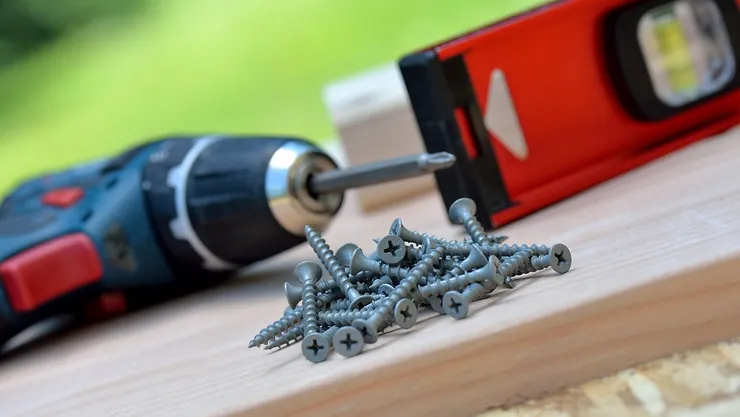
What to Consider Before Choosing Wood Screws
When it comes to choosing wood screws, there are a few things you’ll need to take into account in order to make sure you’re getting the right ones for the job.
1. Head Type
Flat head: Designed to sit flush with the surface of the wood, flat head screws are ideal for applications where a smooth, finished appearance is desired. Because of the tapered shape of the flat head, these screws drive themselves flush with the wood’s surface without needing to be countersunk.
Washer head: The washer-head is distinguished by the presence of small washers within the screw’s head. This design provides additional surface area on the underside of the head, which helps to prevent the screw from sinking too deeply into the material.
Truss head: The head of the screw is flat with a slightly rounded edge, and the center of the head is indented. This gives the screw a mushroom-like appearance, which is where its nickname comes from. The main advantage of this design is its ability to grasp firmly without sticking out excessively, making it perfect for uses like mounting slide drawers.
Another benefit is that the Truss-head screw is less likely to strip than other types of screws, making it a great choice for projects where you need a strong hold.
Oval Head: Oval head screws have a raised head with a slightly rounded top, which makes them ideal for use in areas where a traditional flat head screw might strip the surrounding material. In addition, the raised head of an oval head screw provides more surface area for driving, making it easier to tighten or loosen the screw.
Round Head: For their versatility and user-friendliness, round-head screws are a common choice among fasteners. Screws with a rounded top and a flat underside are ideal for use when fastening anything to wood.
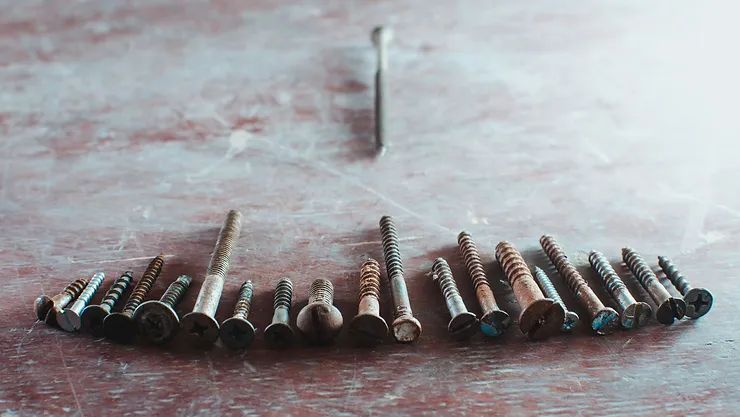
2. Screwdrivers
Phillips drive: There are many different types of screw drives, but the most common is the Phillips-head. Phillips-head screws feature a cross-shaped pattern on the head into which the screwdriver is inserted. This screw drive, which was designed by American engineer John P. Thompson, features a high torque for simple and rapid assembly.
Hex drive: A hex drive is a type of screwdriver that uses a hex-shaped recess in the head of the screw. The most common type of hex drive is the hex socket (or Allen) drive, which is used in millions of applications worldwide. This type of drive is well-suited for use in high-torque applications and is also resistant to cam-out (when the driver “slips” out of the head of the screw)
Hex drives are also used in Phillips and Pozidriv screws. While hex socket drives are the most common type, other variations include internal hex drives, external hex drives, and triple square drives. Hex drives are simple to use and require no special tools or machines; all you need is a standard wrench or socket set.
Square Drive (scrulox): As the name implies, this style uses four-sided heads that can be turned with an adjustable wrench, open-end wrench, or 8- or 12-point sockets (1). The square design provides more surface area for the driver to grip, making it less likely to slip out and strip the screw. This particular design is well-suited for use in installing decking and furniture manufacturing operations, as it is able to handle tougher materials like hardwoods.
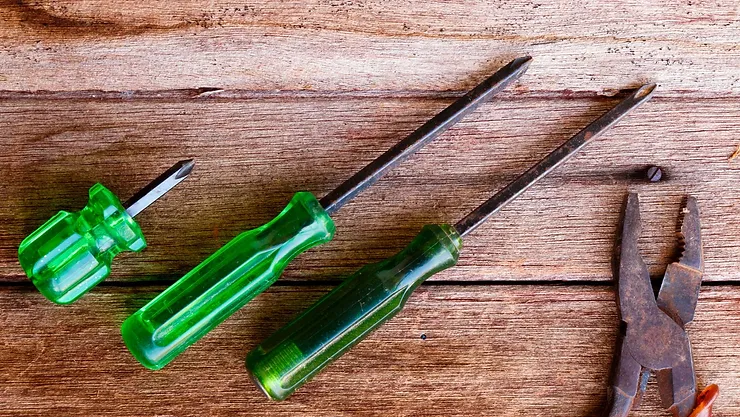
3. Material
Brass: Brass screws are commonly used for their attractive appearance. The golden color of brass screws is often used as an alternative to steel screws, which can sometimes rust.
You can purchase brass screws with countersunk, round, or raised heads. Depending on your project, you may need different types of brass screws. For example, if you are working with thick wood, you may need a stronger screw, such as a round-headed screw.
Stainless steel: Stainless steel screws offer a good level of corrosion resistance and are commonly used in areas that are exposed to moisture. They have a wide range of applications and can be fitted across a variety of wood materials. The head type can be chosen depending on the desired finish.
Steel: Most screws used in woodworking are made of standard steel. Because of their poor resistance to moisture, they are better suited for use indoors.
Related: Nails vs Screws: Which Fastener Should I Use in My Project?
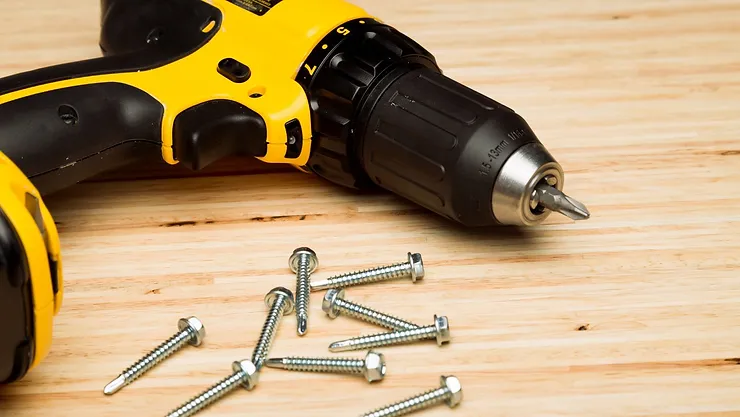
Types of Wood Screws Commonly Used
Deck screws
While deck screws may appear to be the same as regular wood screws, there are some key differences that make them better suited for outdoor applications. Deck screws are typically made from higher quality materials, such as coated steel or copper, which makes them more resistant to corrosion. Also, this kind of screw usually has bigger heads and deeper threads so that they can hold more weight.
Drywall Screws
Most of the time, drywall screws are used to attach drywall panels to wood or metal. They are self-drilling and relatively inexpensive, making them a convenient option for simple applications. For more complex projects, however, it is best to choose a more durable screw that is specifically designed for the task at hand.
Standard wood screws
Standard wood screws are the most commonly used type of screw when working with wood. They come in a variety of lengths and gauges to suit a range of purposes. The normal length for standard wood screws is three or four inches, and their shanks are only half threaded. Instead of getting trapped in the top piece, the screw will be able to drag it toward the components it is screwing into.
The vast majority of non-structural uses for wood screws may be accomplished using these wood screws.
Lag Screws
Lag screws, also known as “lag bolts,” are one of the most popular types of wood screws for joining heavy boards. Their threads are much thicker than those of regular screws, so they provide more support. Lag screws have hexagonal heads, and they require more torque to be tighter than regular screws. Washers are usually used with lag screws to help spread the pressure of the head on the wood across a larger area.
Pocket Screws
Pocket holes are one of the most common ways to join wood, and while they are considered easy to use, pocket screws must be used in order for the joint to be sturdy. Unlike traditional screws, which rely on friction to stay in place, pocket screws actually grip the wood, making them ideal for projects that will be subject to stress or vibration.
Pocket screws have self-drilling tips and larger heads. The self-drilling tip keeps the bottom piece from breaking, and the larger head keeps the screw from being tightened too much and breaking the top piece.
While some may consider any screw a pocket screw, it is important to use only those that are designed for this purpose in order to ensure a successful project.
Structural Screws
Structural screws can securely fasten substantial pieces of lumber and other materials. They resemble standard wood screws, albeit just on the bigger side, and are thus similar to lag screws. When used properly, these screws are extremely sturdy. They are normally reserved for uses with a significant risk of damage. Structural screws are frequently used in deck and playground construction, for example. By using them, builders can be confident that the structure will remain sound.
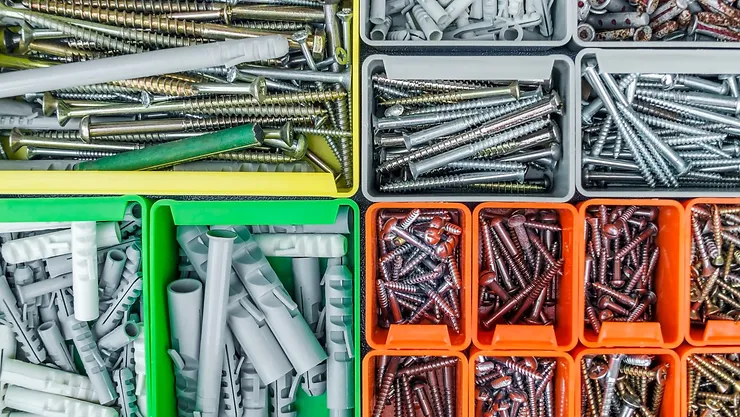
Screws are an important factor to consider before taking on any woodworking project, big or small. With so many types of wood screws available on the market, it can be daunting to figure out which one is best for your purposes. By understanding the different features of each type of screw you can make an informed decision that will help ensure the success of your project. Do you have any other tips for choosing the right wood screw? Share them with us in the comments below!
(1) https://en.wikipedia.org/wiki/List_of_screw_drives#Square




